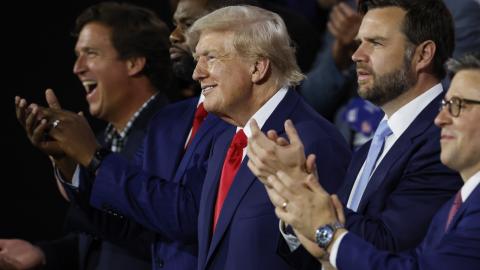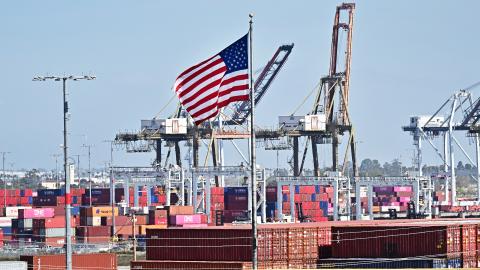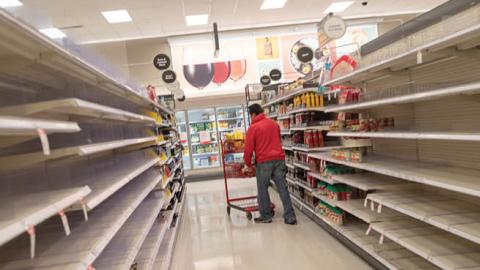Visited a grocery store lately? If so, you’ve likely experienced long lines, packed aisles, and plenty of empty shelves that not long ago were filled with toilet paper, cleaning supplies, pasta, and more. No, this isn’t the Soviet Union. This is America in the age of the coronavirus.
Due to panic buying, consumer demand for household staples is outstripping current supply on store shelves. In most well-functioning markets, as demand for a good increases, so too does its market price. This, in turn, spurs businesses to supply more of it to the marketplace, ensuring more goods end up in the hands of more consumers.
But thanks to government, this isn’t happening. Most states have laws prohibiting “price gouging,” making it unlawful the price of certain products during declared emergency periods. In some states, an unlawful price increase can be as little as 10% above the market price.
These government price controls, while well-intentioned, rarely work. Instead, they typically cause artificial shortages of essential goods. Shortages, in turn, lead to long lines, hoarding, and black-market online scalpers. Historically, communist regimes fixed the price of products, with well-documented results: long lines, barren shelves, and empty stomachs.
The consequences of product shortages are particularly heightened during our current crisis, which demands social distancing. Thanks in part to “price gouging” laws, consumers without access to delivery services may be forced to stand in long lines for toilet paper, groceries, and other products for hours on end, if they’re even able to buy them at all. During this time, they might become infected by fellow patrons or even store employees asymptomatically carrying the virus. This is particularly harmful for elderly, immunosuppressed, or otherwise vulnerable groups.
Ultimately, the inability to purchase a product at all is far worse for a consumer than the opportunity to purchase it at a higher price. Indeed, it is morally bankrupt to tell an 85-year-old that toilet paper isn’t available for sale for miles because a 10% price increase would have violated laws against “price gouging.”
Yet we’ve seen this happen before. In the 1970s, the federal government fixed petroleum prices below competitive world prices. The predictable result was that suppliers withheld petroleum-based products, such as gasoline, from the market. Consequently, gasoline was scarce, and millions of Americans wasted untold hours in line waiting to top off their tanks. A decade later, government lifted the price controls. Gasoline companies supplied more of the product to the market, and American consumers could once again purchase as much gasoline as they liked, without having to wait in line for hours on end.
One might think our current government is taking every precaution to avoid a similar situation now, allowing grocers and others to adjust their prices to reflect actual market conditions. Instead, congressional members and state officials have urged the Federal Trade Commission and state law enforcers to prevent so-called “price gouging” during the current pandemic. In doing so, they seek to maintain “fair” prices.
But what is a “fair” price? To a consumer, a “fair” price likely means one that ensures that essential products are widely available, without the need to brave long lines during a public health crisis. To some government agencies, though, a “fair” price may be one that is substantially less than the market can sustain, resulting in the nightmares witnessed in American stores today. There is little “fair” about such a price.
When American grocery stores resemble scenes from the Soviet Union, something is obviously, terribly wrong. We should suspend so-called “price gouging” laws and allow businesses to set market-based prices. This strategy worked in the 1980s; it will work again today.
Read in RealClear Markets





















